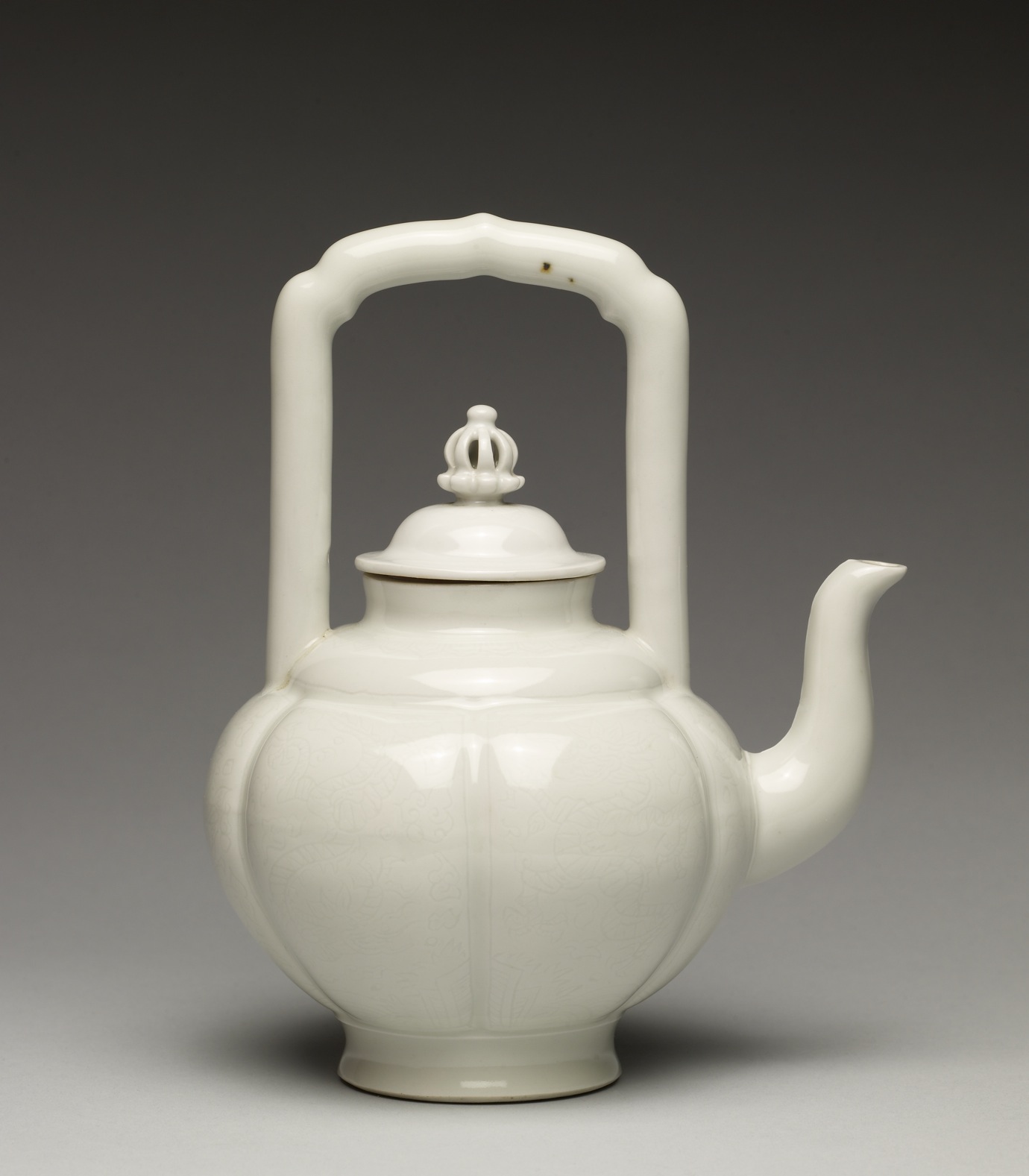Lobed Fresh Water Ewer
(Japan and Korea )
This fresh water ewer (suichū) may be used in sencha tea services for pouring water throughout the service, including adding water to the tea kettle and to the water pot, pouring water into the tea bowl, teapot, and water cooler (yuzamashi), and cooling the tea bowl and teapot.
This ewer is exemplary of Aoki Mokubei's work as the "reviver" of Kyoto ceramics at the beginning of the nineteenth century. The elegant yet conservative profile and extremely subtle incised patterns under the clear glaze surface are characteristic of his Chinese-inspired approach. Mokubei was particularly noted for his embrace of Chinese traditions of porcelain making and his interest in infused tea (sencha) practice. This ewer is of the form that would have been used for wine, but it shares some of the characteristics of sencha utensils in its curved spout, thin-walled construction, and ornate lid. The glaze coating of the interior and exterior surfaces is also characteristic of Mokubei's beautiful, functional wares.
Provenance
Provenance (from the French provenir, 'to come from/forth') is the chronology of the ownership, custody, or location of a historical object. Learn more about provenance at the Walters.
Acquired by Kososhi Takashi, Kyoto; purchased by James Freeman, Kyoto, 2003; given to Walters Art Museum, 2013.
Conservation
| Date | Description | Narrative |
|---|---|---|
| 4/15/2014 | Examination | Examined for accession |
| 4/15/2014 | Examination | The porcelain ewer made by Kyoto potter and painter Aoki Mokubei, is in excellent condition without damage from past use. Two flaws, shrinkage cracks, occurred during manufacture. One crack is located around the bottom of the handle at the join to the shoulder. The other is a blind crack visible only on the lower interior of the body. The body, handle and spout are mold made while the shoulder, neck and foot are wheel thrown. The dragon pattern is incised into the porcelain and then covered a transparent glaze. |
Geographies
Japan, Kyoto (Place of Origin)
Measurements
H: 7 13/16 × W: 6 7/16 × D: 4 7/8 in. (19.9 × 16.3 × 12.4 cm); Lid H: 2 1/16 × Diam: 2 1/4 in. (5.2 × 5.7 cm); Box H: 11 1/4 × W: 9 1/4 × D: 7 1/16 in. (28.5 × 23.5 × 18 cm)
Credit Line
Gift of James Freeman, 2014
Accession Number
In libraries, galleries, museums, and archives, an accession number is a unique identifier assigned to each object in the collection.
In libraries, galleries, museums, and archives, an accession number is a unique identifier assigned to each object in the collection.
49.2830


